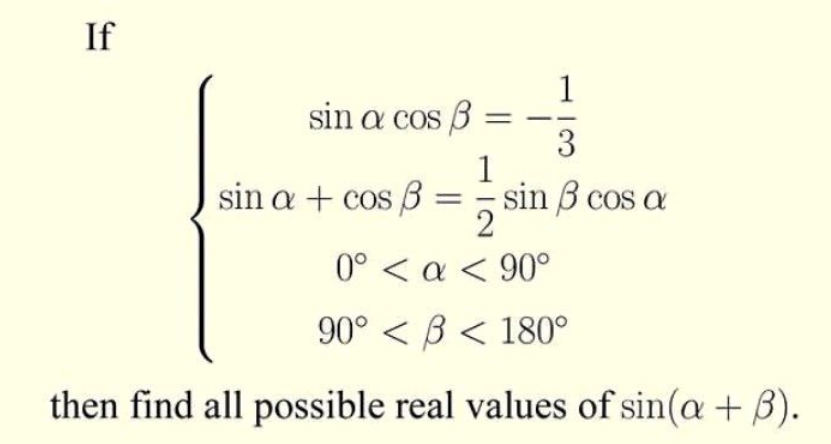
Question Number 187376 by Rupesh123 last updated on 16/Feb/23

Answered by Frix last updated on 17/Feb/23
![xy=−(1/3) x+y=(1/2)(√(1−x^2 ))(√(1−y^2 )) Solve this [which is easy] ⇒ α=sin^(−1) ((√5)/3) ≈48.19° β=(π/2)+sin^(−1) ((√5)/5) ≈116.57°](Q187448.png)
$${xy}=−\frac{\mathrm{1}}{\mathrm{3}} \\ $$$${x}+{y}=\frac{\mathrm{1}}{\mathrm{2}}\sqrt{\mathrm{1}−{x}^{\mathrm{2}} }\sqrt{\mathrm{1}−{y}^{\mathrm{2}} } \\ $$$$\mathrm{Solve}\:\mathrm{this}\:\left[\mathrm{which}\:\mathrm{is}\:\mathrm{easy}\right]\:\Rightarrow \\ $$$$\alpha=\mathrm{sin}^{−\mathrm{1}} \:\frac{\sqrt{\mathrm{5}}}{\mathrm{3}}\:\approx\mathrm{48}.\mathrm{19}° \\ $$$$\beta=\frac{\pi}{\mathrm{2}}+\mathrm{sin}^{−\mathrm{1}} \:\frac{\sqrt{\mathrm{5}}}{\mathrm{5}}\:\approx\mathrm{116}.\mathrm{57}° \\ $$
